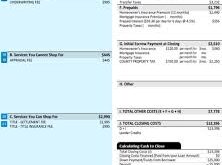Refinance Home Mortgage: Lowering Your Monthly Payments. Refinancing a home mortgage can be a great way to reduce monthly payments, secure a lower interest rate, or access home equity for other financial needs. Whether you’re looking to save money or adjust your loan terms, understanding the refinancing process is essential. This guide will provide you with everything you need to know about refinancing your home mortgage, including benefits, types, steps, tips, and frequently asked questions.
What is Home Mortgage Refinancing?
Home mortgage refinancing involves replacing your current mortgage with a new loan, typically with better terms. Homeowners refinance for various reasons, such as reducing interest rates, shortening the loan term, switching from an adjustable-rate to a fixed-rate mortgage, or accessing cash through home equity.
Benefits of Refinancing a Home Mortgage
- Lower Interest Rates – Reduce overall loan costs and monthly payments.
- Reduced Monthly Payments – Make homeownership more affordable.
- Shorter Loan Term – Pay off your mortgage faster and save on interest.
- Cash-Out Refinance – Access home equity for renovations, education, or debt consolidation.
- Switching Loan Types – Move from adjustable to fixed rates for stability.
- Remove Private Mortgage Insurance (PMI) – If you have built enough equity, you may eliminate PMI.
Types of Home Mortgage Refinancing
- Rate-and-Term Refinance – Adjust interest rates or loan duration without withdrawing cash.
- Cash-Out Refinance – Replace your mortgage with a larger one to access cash.
- Cash-In Refinance – Pay down a portion of your mortgage to qualify for better terms.
- Streamline Refinance – A simplified process with fewer documentation requirements.
Steps to Refinance a Home Mortgage
Step 1: Assess Your Financial Situation
Review your credit score, existing mortgage terms, and financial goals before deciding to refinance.
Step 2: Research and Compare Lenders
Compare multiple lenders to find the best interest rates and loan terms available.
Step 3: Apply for Refinancing
Submit your application, including income verification, credit reports, and home appraisals.
Step 4: Lock in Your Interest Rate
Secure an interest rate to prevent fluctuations before closing your refinance.
Step 5: Underwriting and Approval Process
Lenders evaluate your application, creditworthiness, and home value before approval.
Step 6: Closing on the New Mortgage
Sign the final documents, pay closing costs, and officially switch to your new mortgage.
10 Tips for Refinancing Your Home Mortgage
- Check Your Credit Score – A higher score leads to better loan terms.
- Compare Multiple Lenders – Different lenders offer varying rates and fees.
- Calculate Break-Even Point – Ensure refinancing savings outweigh closing costs.
- Understand Loan Terms – Choose the right loan type and duration.
- Negotiate Fees – Ask lenders to waive or reduce closing costs.
- Consider Cash-Out Refinancing Carefully – Only take out extra funds if necessary.
- Improve Debt-to-Income Ratio – Lowering debt increases loan approval chances.
- Stay Employed and Maintain Income Stability – Lenders prefer financial stability.
- Beware of Prepayment Penalties – Check if your current mortgage has penalties for early payoff.
- Work with a Mortgage Broker – They can help find the best deals.
10 Frequently Asked Questions (FAQs)
1. When is the best time to refinance a home mortgage?
The best time is when interest rates are lower than your current mortgage rate or when your credit score has significantly improved.
2. How much does refinancing cost?
Refinancing typically costs 2-5% of the loan amount, including application, origination, and closing fees.
3. Can I refinance with bad credit?
Yes, but expect higher interest rates and stricter loan terms. Improving credit before applying is recommended.
4. How long does the refinancing process take?
It usually takes 30-45 days, depending on the lender and required documentation.
5. Does refinancing affect my credit score?
Yes, applying for a new loan results in a temporary dip in your credit score.
6. Can I refinance if my home value has dropped?
It may be possible through programs like FHA Streamline or HARP if available.
7. Is it worth refinancing for a 1% lower interest rate?
Yes, if you plan to stay in the home long enough to recover closing costs.
8. Can I refinance multiple times?
Yes, but ensure the benefits outweigh the costs each time.
9. What documents are needed to refinance?
Typical documents include tax returns, bank statements, pay stubs, and mortgage details.
10. Can I refinance a mortgage with late payments?
Late payments can make it difficult, but some lenders may still approve under specific conditions.
Conclusion
Refinancing a home mortgage can be a smart financial move, offering lower payments, reduced interest rates, and better loan terms. However, it requires careful evaluation of costs, benefits, and lender options. By understanding the process and following best practices, homeowners can make informed decisions to maximize savings and financial security. If you’re considering refinancing, take time to compare lenders, analyze your financial situation, and ensure the new mortgage aligns with your long-term goals.
 mortgage.kbk.news
mortgage.kbk.news
